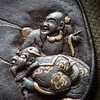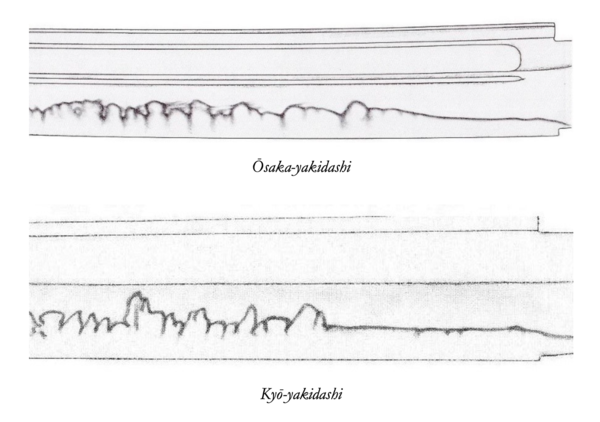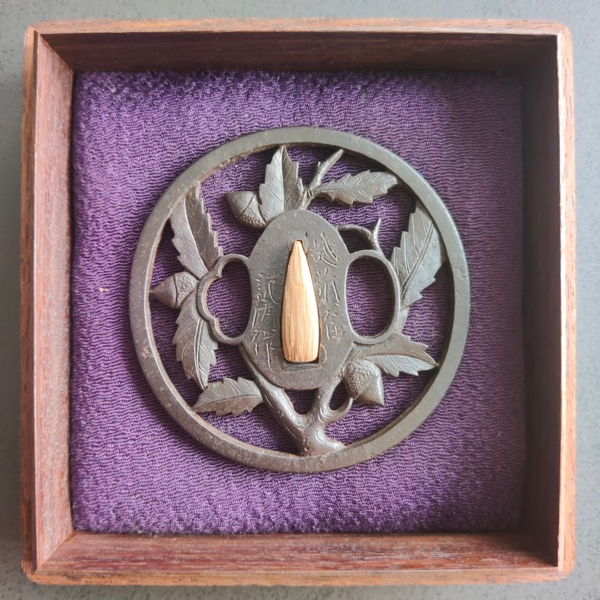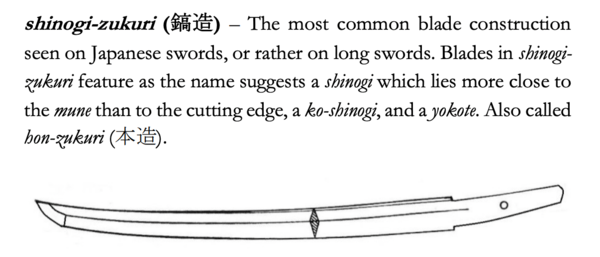-
Posts
395 -
Joined
-
Last visited
Content Type
Profiles
Forums
Events
Store
Downloads
Gallery
Posts posted by francois2605
-
-
I bought once from them, indeed their communication is a bit blunt probably because they're not very comfortable with english. I paid them via PayPal, everything went fine, they even declared the sword as an antique one for the customs even though I never asked them to do it.
-
 1
1
-
-
Nicholas, there is this hotel in Japan which looks pretty unique: https://www.militaria.co.za/nmb/topic/29265-this-hotel-has-one-of-the-coolest-katana-collections-in-Japan-and-admission-is-totally-free
Edit: probably not compatible with your time constraints
-
Is it possible to see close-ups of the hada and hamon ? I'm sure this will help your sale.
-
Bruce wrote a great document about stamps found on WW2 swords that you can find here:
Look in page 28
-
Just to give an order of magnitude: Aoi Arts charged me 33 000 JPY in April for the UPS shipping fees (of a wakizashi) to France.
-
Simply by adding a link to this thread in your sale post
-
BTW I forgot to mention that there is link to a template of kantei sheet in the "Nihonto Info" menu on the forum, this should guide you in the process.
-
1 hour ago, WellsFargo said:
hamon which started with a straight line from before / under the hamachi and then gently progressed into gunome midare
My 2 cents: the technical term for this is yakidashi.
From Markus Sesko's Encyclopedia of Japanese Swords.
Quoteyakidashi (焼出し) – The beginning of a hamon around the ha-machi. At unshortened blades, the hamon usually runs a little bit into the tang. There are different interpretations of this starting of the hamon and we basically distinguish between the following forms: sugu- yakidashi (直刃焼出し), straight start which turns after a more or less short distance into the “actual” hamon; Ōsaka-yakidashi (大坂焼出し), also starts straight or as gentle notare but the yakiba widens smoothly to turn into the “actual” hamon; Kyō-yakidashi (京焼出し), the yakiba starts in suguha but turns then rather abruptly into the “actual” hamon; Mino-yakidashi (美濃焼出し), the yakiba starts with a koshi-ba; Satsuma-yakidashi (薩摩焼出し), term to refers to Satsuma-shintō blades where the hamon starts like at most kotō blades right away as midareba.
-
 2
2
-
-
16 minutes ago, PNSSHOGUN said:
Hi Ced, Mr Chua below would be worth contacting: https://www.kinghouse.sg/introduction
How weird, I had a look to the "Military swords" collection and stumbled upon several eBay pictures from Komonjo and SamuraiMonkey.
This (Komonjo) 1937 katana is supposedly by Yasunori... Obviously a fake but why is it there ?!? I'm so confused
-
 1
1
-
-
Is it possible to see the opposite side of the tsuba ?

-
My understanding is that the shipping to Europe stopped because of the situation in Ukraine so it normally shouldn't resume before the war ends
-
Excellent, thank you so much for this information, Piers.
I would have never guessed !
-
 1
1
-
-
-
Hello William, that's a nice Type 3 you have here.
Some minor remarks regarding your description:
Shin-gunto refers to a type 94/98 koshirae, yours is a type 3.
The sugata is shinogi-zukuri, iori-mune only describes the geometry of the sword's back.
The nagasa is too long and cannot be correct, gunto normally have a length between 60 and 65 cm. You probably measured the total sword length which isn't the nagasa.

-
Your sword is gorgeous, it looks very powerful with its long kissaki.
Are you alluding to a kinnoto in your description ? I remembered (from Aoi Arts pictures) that kinnoto had an extra long nakago (among other things) that I can't see on your sword so I checked Markus' encyclopedia of Japanese swords and I don't think your sword qualifies as one: the nagasa should be at least 80 cms and the nakago is too short (once you've seen a kinnoto nakago, you just can't forget it).
-
 1
1
-
-
Peter hasn't been online since Jan 23rd according to his profile page
-
 1
1
-
-
Hello Erick and welcome to the board and this hobby

Have you already removed the tsuka (handle) ? It would be helpful to see pictures of the nakago (tang) and if there is a mei (signature).
At first glance, the hamon looks very nice. I also like the habaki with the 2 different metals (that's a good sign IMO).
The tsuba is unusual for a shin-gunto, maybe that is a civil variant ? Others will be able to tell.
If you remove the tsuka, you may find matching numbers on the tsuba, seppa (washers) and tang.
The color of the sarute tells me it's not original to the koshirae.
Edit: Bruce Pennington maintains a very useful reference document Stamps of the Japanese Sword listing the different types of stamps one can find on military swords.
-
Could this be a typo ? Hard to believe the book sold for that much
-
Thanks for sharing, this sword is absolutely stunning
-
 1
1
-
-
There seems to be at least one exception to the "Woody doesn't polish gendaito" rule:
-
Thanks for those explanations Bruno. I had no idea
-
Is it possible to receive NBTHK awards without being a properly trained togishi ? Because Massimo reportedly did and I have a hard time squaring this with the fact he's not traditionally trained.
Edit: is it possible that you're mistaking Massimo with Pierluigi Ponzio ?
-
 1
1
-
-
Very nice sword, Volker

It ticks a lot of my boxes: nice hada, gunto 3 koshirae and Nagamitsu sword.
-
 1
1
-
-
Bruce, Nagamitsu = "Ichihara Ichiryushi Nagamitsu" as per http://www.japaneseswordindex.com/naga.htm









For Sale - WW2 Gunto type 3, (South Florida) Masanori 正則
in Auctions and Online Sales or Sellers
Posted
@Ray Singer is in Florida, you may want to contact him